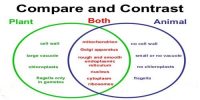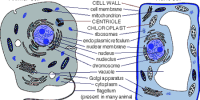The immune system is the body’s defense against infection. The immune system attacks germs and helps keep us healthy. A complex group of immune responses is found in the immune system, human and other advanced vertebrate regions that help prevent pathogens. Among humans and other animals, the organ systems are the inguinal system, lymphatic system, muscular system, nervous system, reproductive system, urethra, respiratory system, skeletal system, and immune system. Both subsystems use heuristic immunity and cell-mediated resistance to perform their functions. In humans, blood-brain barriers, blood-cerebrospinal fluid barriers, and similar fluid-brain barriers separate the peripheral immune system from the neuroimmune system, which protects the brain.
The immune system is the organ system responsible for protecting the organism from the harmful effects of the presence of foreign bodies. Pathogens can develop and adapt quickly and thus avoid detection and neutralization by disease resistance; However, multiple immune mechanisms have also been developed to detect and neutralize pathogens. Even common unicellular organisms, such as bacteria, have an initial immune system in the form of an enzyme that protects against bacteriophage infection. Immune cells, such as white blood cells, develop immunity against self or foreign bodies that lead to immunity and immunity. These processes include phagocytosis, defenses called antimicrobial peptides, and the complement system. The Javed vertebrates, including humans, have more sophisticated defenses, with the ability to adapt over time to more efficiently detect germs at specific times. Indefinite defense mechanisms leave all microorganisms equally behind, while specific immune responses are appropriate for certain types of invaders. Both systems work together to prevent the organism from entering and spreading inside the body. Adaptive immunity produces immunological memory after the initial reaction of a specific pathogen, which produces an enhanced response to subsequent fights with the same pathogen. This process of acquired immunity is the basis of vaccination.
Disorders of this system can lead to autoimmune diseases, inflammatory diseases, and cancer. In humans and other vertebrates, the immune system can be classified into an innate immune system and an adaptive immune system. The job of the innate immune system is to detect and respond to pathogens in a generic way. In humans, immunodeficiency is a result of a genetic disorder such as severe combined immunodeficiency, which can lead to acquired conditions such as HIV / AIDS or the use of immunosuppressive drugs. Examples of innate immunity responses include cytokines production, immune cell recruitment, complete cascade activation, removal of foreign substances by white blood cells, antigen presentation, and physical and chemical resistance against infectious agents. In contrast, autoimmunity from the hyperactive immune system attacks normal tissues as if they were foreign organisms. Common autoimmune diseases include Hashimoto’s thyroiditis, rheumatoid arthritis, diabetes mellitus type 1, and systemic lupus erythematosus. Immunology involves the study of all aspects of the immune system.















